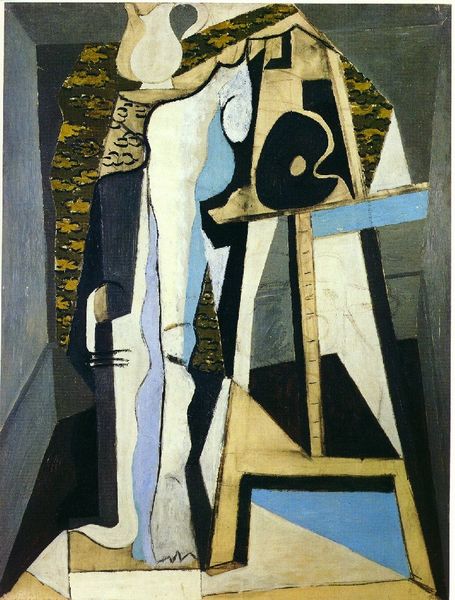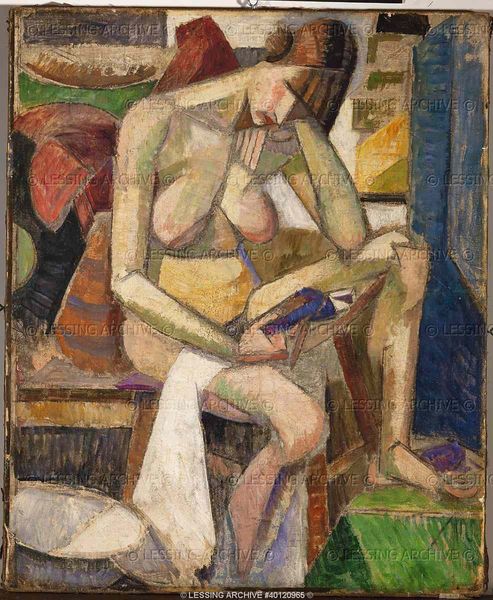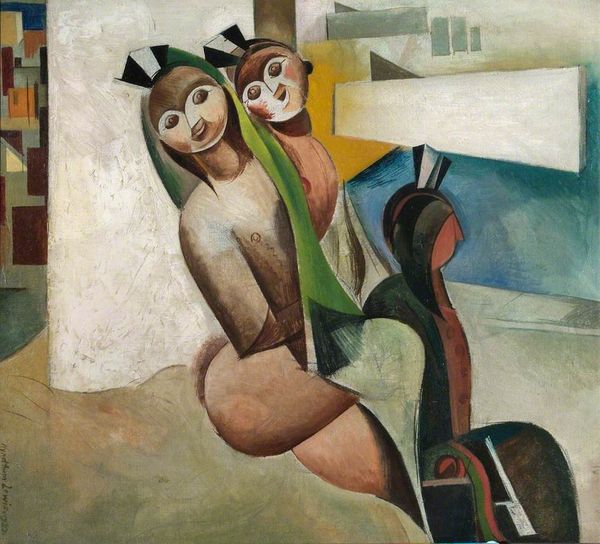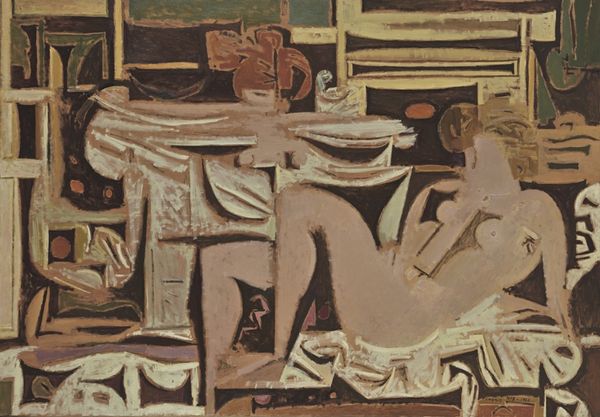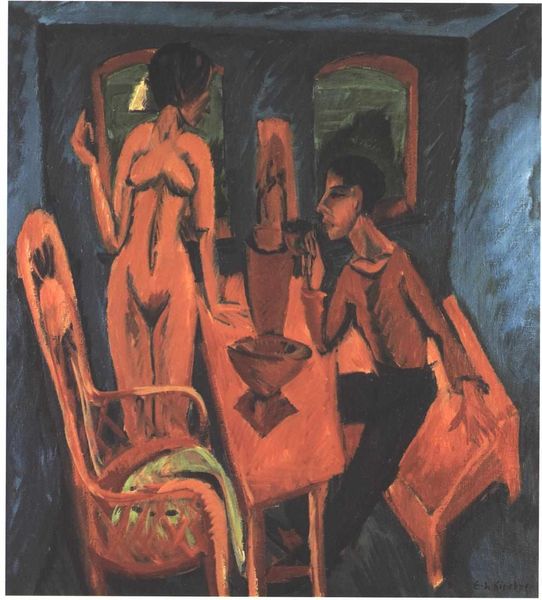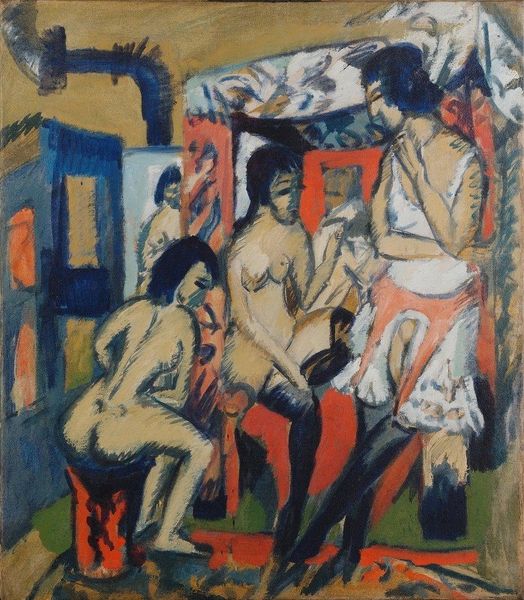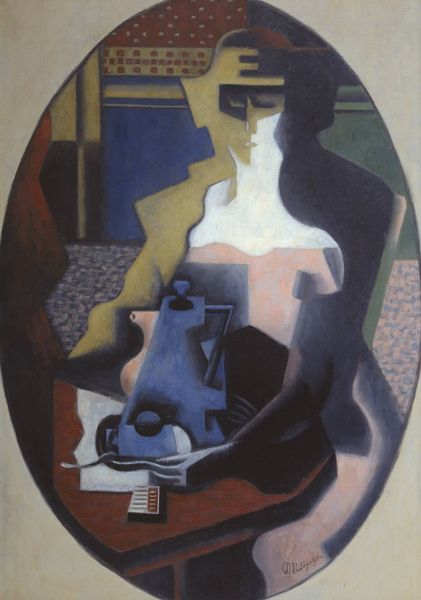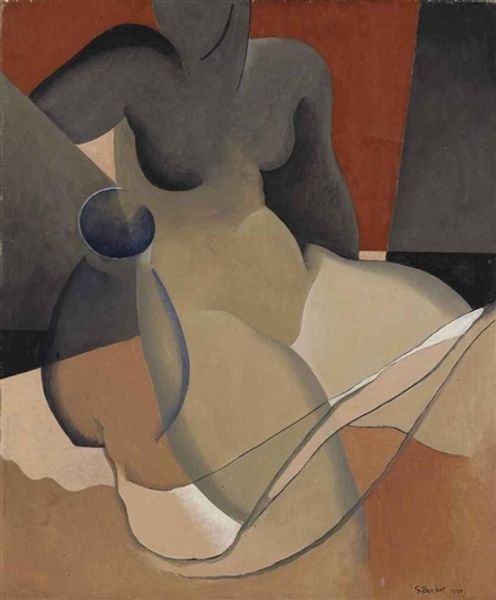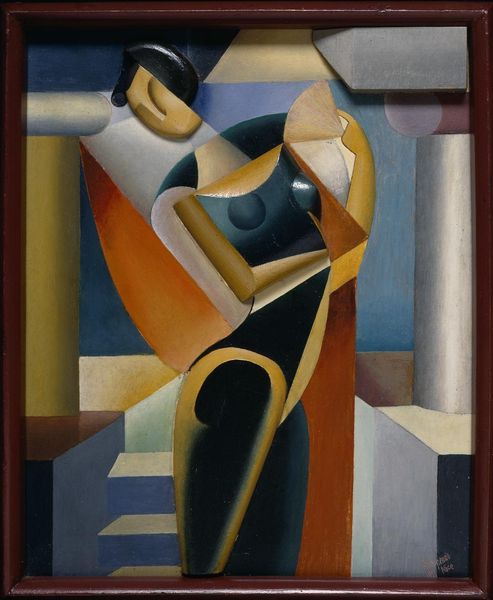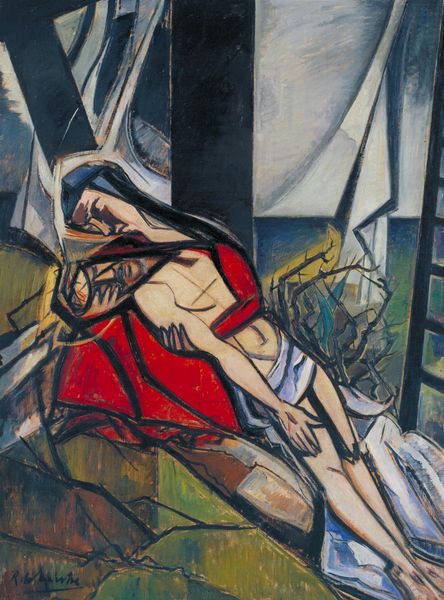
oil-paint
#
portrait
#
cubism
#
oil-paint
#
oil painting
#
facial portrait
#
portrait art
#
modernism
Copyright: Wyndham Lewis,Fair Use
Curator: Wyndham Lewis's 1933 painting, "The Convalescent," renders a seated figure in his distinctive style. What is your initial response to the work? Editor: There's a peculiar stillness. It feels almost like a fragmented memory of domesticity. The light seems fractured, reflecting an inner struggle. What kind of symbolism can we unravel in the geometry? Curator: Well, Lewis's engagement with Vorticism—a movement he founded—certainly informs the geometric planes we see here. "The Convalescent," particularly when considered against the backdrop of the interwar period, is deeply steeped in the politics of gender and power. Notice the sharp lines defining the figure's body; the portrait challenges traditional representations. Editor: Absolutely, and there's something about the teacup on the bedside table that calls to mind ancient medicinal symbols: small vessels that signify healing, but here distorted into angular shapes that evoke a discomfort instead of a comfort. Considering its cultural memory, does tea imply a failed curative power, perhaps mirroring societal ills? Curator: Exactly. In many ways, Lewis positions the unwell body as a metaphor for a society reeling from the trauma of war. By embracing angularity and disrupting idealized forms, Lewis offers us a figure stripped bare. Their individual frailty underscores the universal experience of vulnerability. Editor: This visual vocabulary of distortion also translates emotional weight: the psychological impact of those years is concentrated into a tense collection of sharp edges. Even the color palette feels restricted, as if draining the life force from the space, leaving shadows lurking where one seeks solace. It feels intensely psychological, doesn’t it? Curator: I agree entirely. And, thinking intersectionally, we must consider the work in terms of class, disability, and the politics of care. To what extent are such states depicted? Lewis refrains from idealizing suffering, but by denying conventional sentimentality, he invites a harsher analysis of our collective response. Editor: This dialogue between angular distortion and subdued colour tells a potent tale about how societies perceive states of debilitation. It seems Wyndham Lewis forces a discomforting question: where do we locate humanity in our representations of healing, or a lack thereof? Curator: Precisely. This conversation really has underscored how complex a seemingly still artwork can be! Editor: Indeed, allowing an enriched perspective for our listeners that takes account of symbolism and its broader societal relevance.
Comments
No comments
Be the first to comment and join the conversation on the ultimate creative platform.
